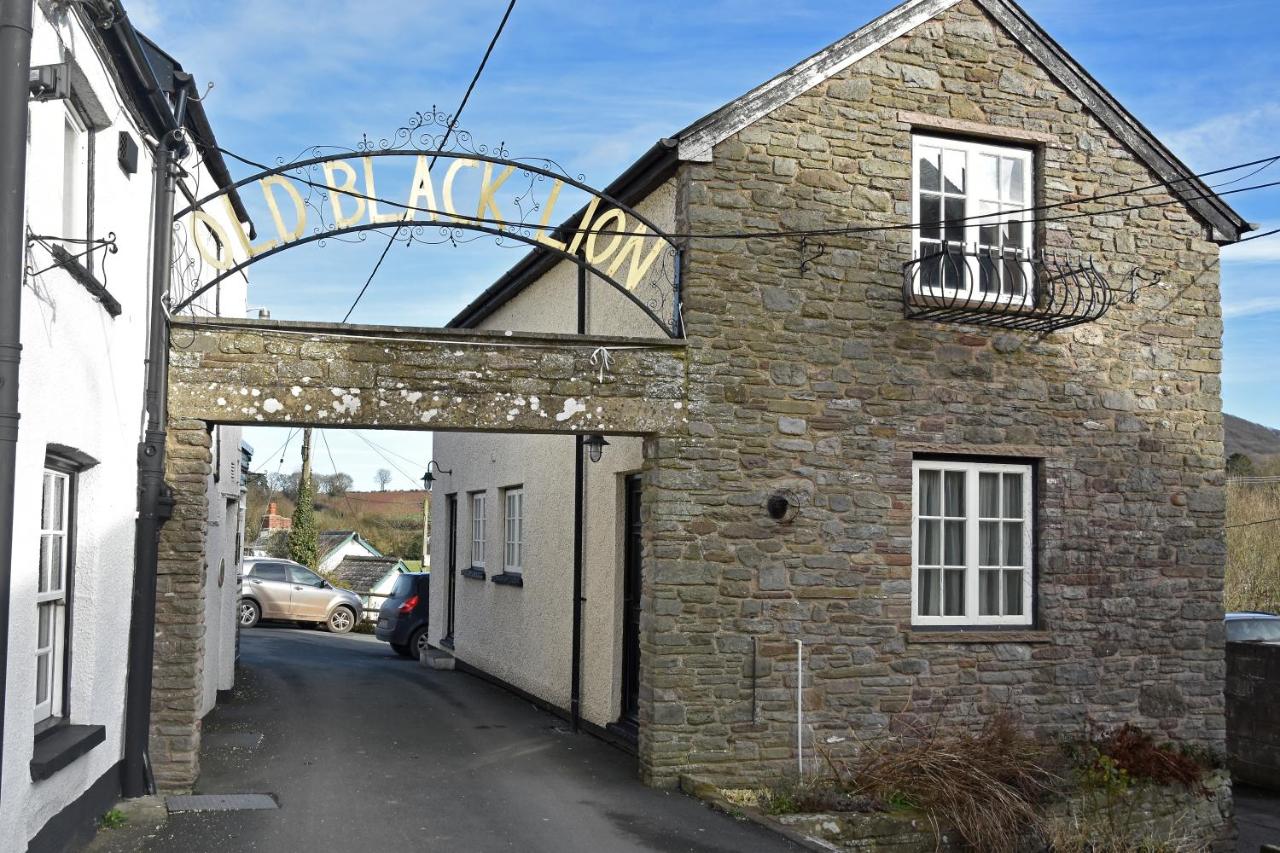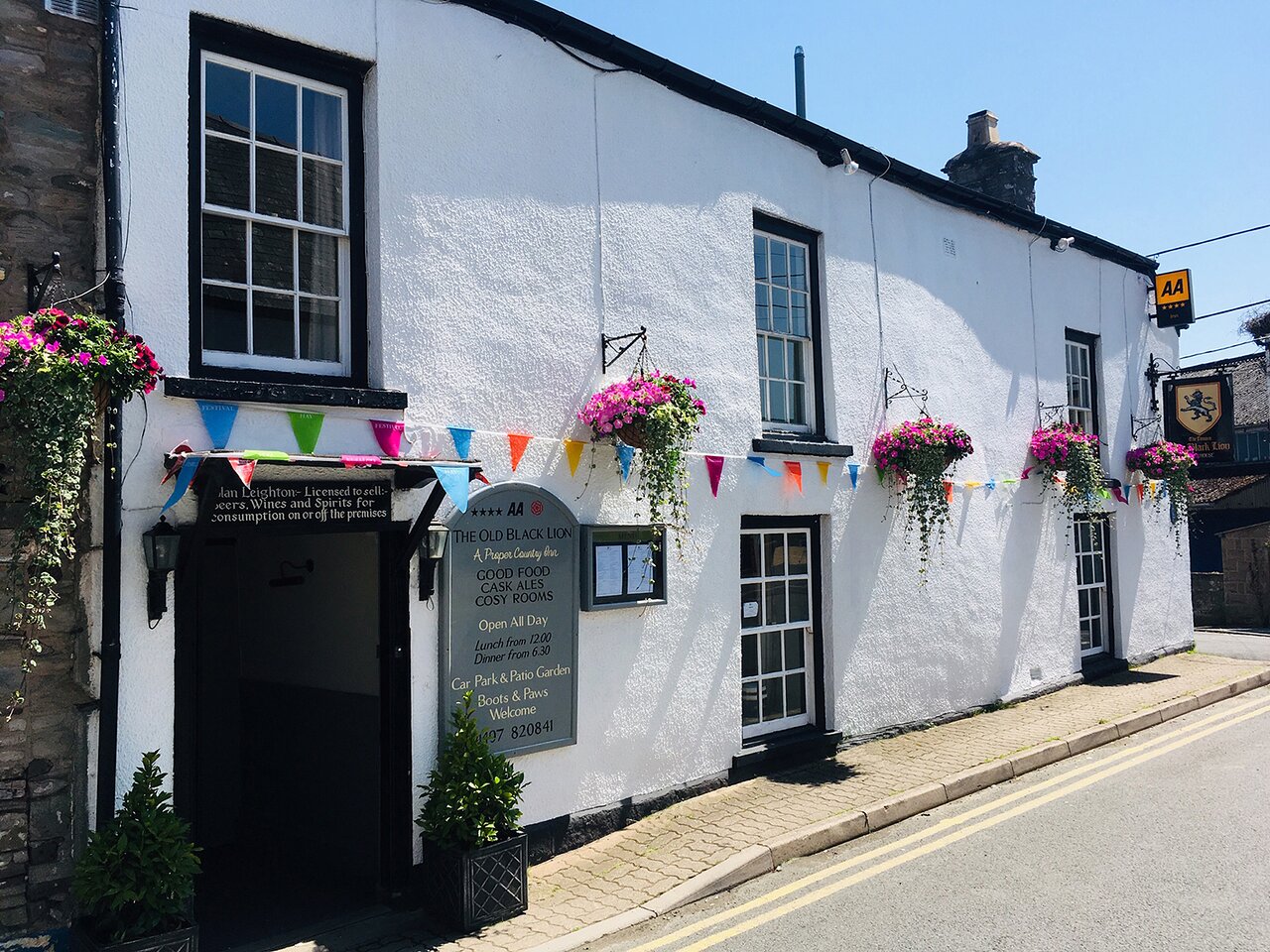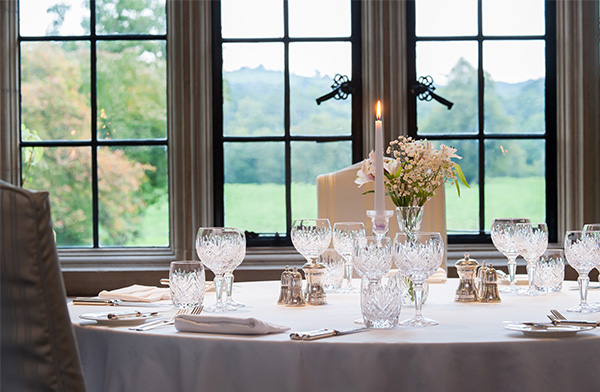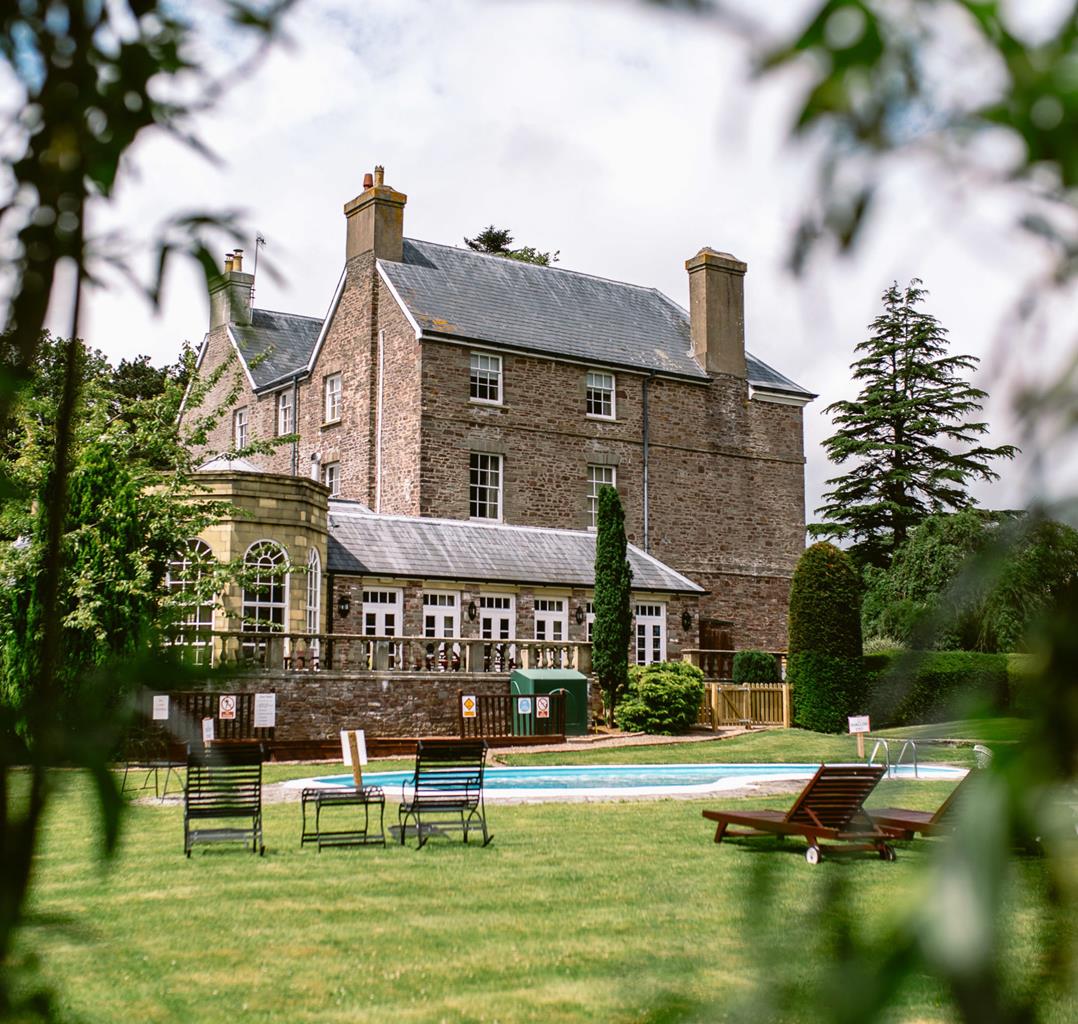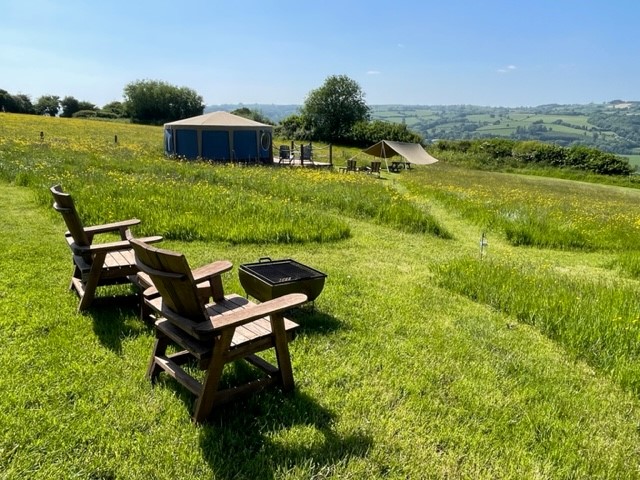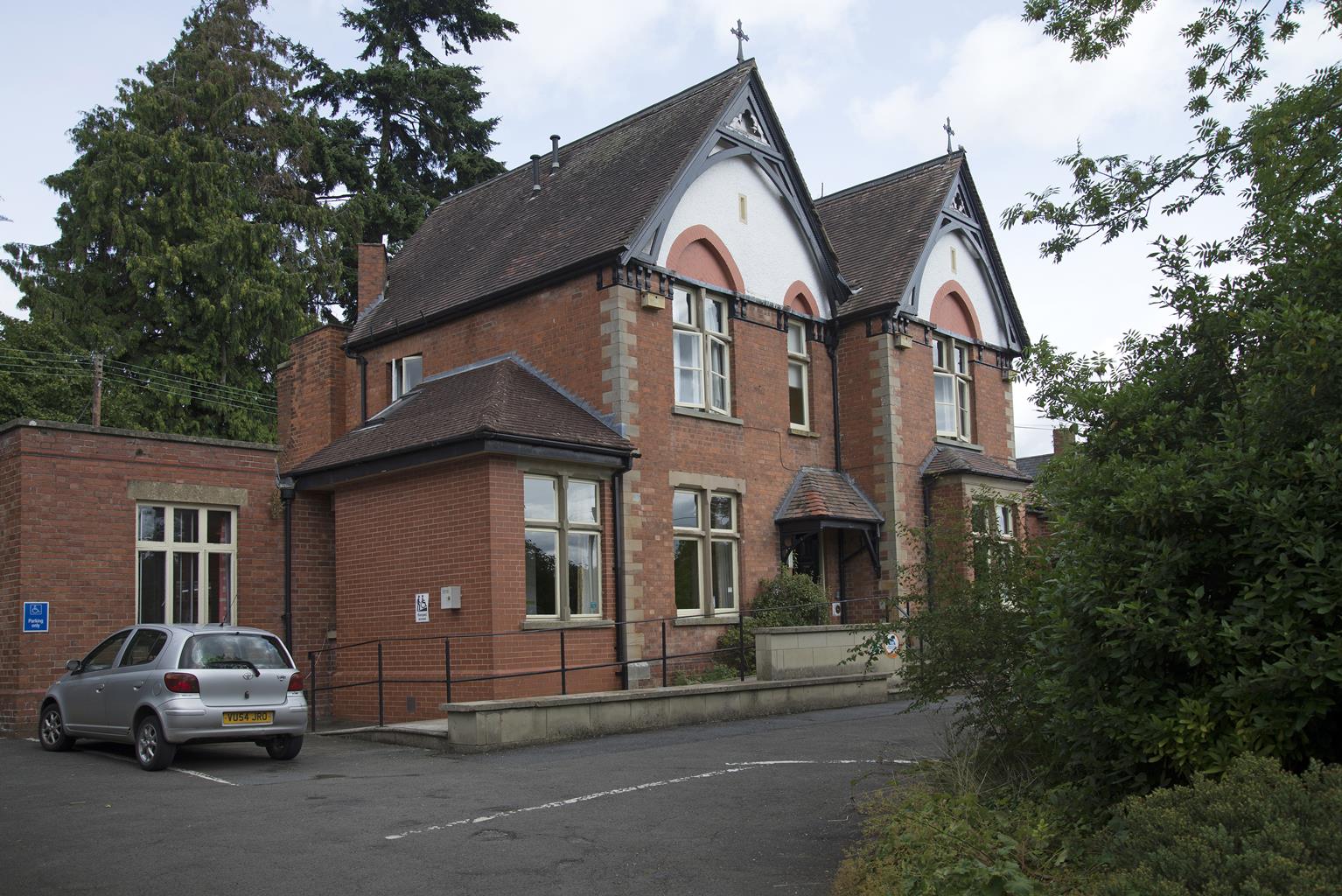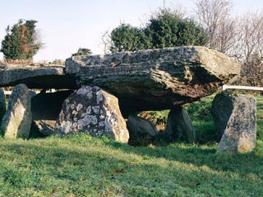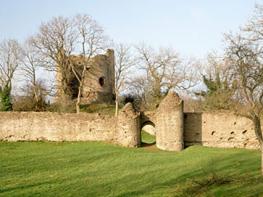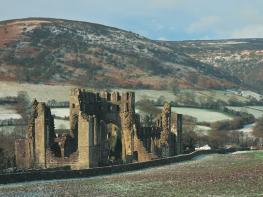Awaiting description.
A circuit from Clifford

6.25 miles (10.1kms)
About the walk
Clifford was a planned Norman town of perhaps 200 dwellings, surrounding a castle built around 1070 by William Fitz Osborn (later the 1st Earl of Hereford) overlooking a ford across the river. It appeared in the 1086 Domesday survey, and maps from the 1360s show it to be one of only three significant settlements in the county; Wigmore and Hereford itself being the others. It prospered in the relative stability of the 12th century, but by the 15th century was no longer of importance.
Supplementing the natural defences afforded by the knoll on which the fortification stands, an earth dam impounded a shallow lake across the flood plain to the south of the castle. Earthworks remain from the original motte, with much of the surviving stonework being from the mid-13th century.
Although contemporary with the castle, St Mary’s Church on the hill above has escaped the ravages of war and withstood the test of time. It was probably associated with the now vanished Clifford Priory, which overlooked Hardwicke Brook, just to the south. The monastery was founded under the Cluniac order around 1130 and contained extensive fish ponds to ensure a ready source of food. Although some original stonework remains in the church nave, the present edifice is largely the product of Victorian rebuilding. Among its features are four family shields on the belfry roof and a rare 13th-century wooden effigy of a priest in vestments, which bears a striking resemblance to one in Hereford Cathedral of Bishop Aquablanca. Local legend decrees it to be of Simon FitzRichard, who founded the priory, and it was processed around the church on Founder’s Day.
On the route you’ll cross and re-cross the dismantled railway that connected Dorstone, in the heart of the Golden Valley, with Hay-on-Wye. Running for 19 miles (31km), it joined the line that served Hereford and Hay (and continued on to Brecon) about 1 mile (1.6km) southwest of Clifford, the line from Hereford having been built some 25 years earlier, in 1864. It survived only 10 years before becoming bankrupt, but was re-opened as part of the Great Western Railway in 1901. It was finally closed in 1953.
Walk directions
Walk downhill from the church past a junction to a fingerpost indicating a path off right. Entering a field, strike diagonally left to the bottom corner. Over stiles go right and soon right again into Ton Wood. Follow a winding path left through the trees. Beyond, bear right downfield, cross the embankment of a former railway and continue down towards Clifford.
For a distance glimpse of the castle, follow the holly-tunnelled path in front into the village and go left, then first right. Otherwise, strike sharp right, following a sparse line of trees to exit at a junction. Take the narrow lane opposite for 0.25 miles (400m). Through a kissing gate on the right, cross a narrow field, then the old railway to climb away at the field edge. After 150yds (137m), slip through a gap to continue up on the opposite side of the boundary and finally follow a contained path to a lane at Poolpardon.
Go left. Some 100yds (91m) beyond a right-hand bend, leave right over a stile. Follow the left wall then make for the top-left field corner. Over a stile, keep with the right hedge to emerge onto a lane. Take the track opposite and go right past a cottage. Bear left beside a green, crossing a track to continue forward through trees to a kissing gate. Head downfield to reach another lane.
Walk downhill for 0.5 miles (800m). Turn right at a junction by a school then leave left over a stile. Strike up half-left to a hedge corner, curving past it to a stile by a white cottage.
Leaving the yard, take a gate on the right. Follow the field-edge right into trees and walk on along an old way. Leaving the wood, continue another 100yds (91m) to a stile on the right. Cross the field to more stiles and then keep with the left hedge to a track. Turn right to Holy Trinity Church.
Return to Point (5). Entering the field, follow the left boundary to a stile tucked behind a corner. With the hedge now on your right, go around two sides to a stile. Swing right and follow the hedge out to the B4352. Go right past a track to a stile on the left. Head across a couple of fields. Initially by a hedge, keep the same line in the next field to a gate near the far corner. Diverging from the right hedge, make for a stile in an indented corner. Strike past a solitary oak, crossing into another field to a gate at the top.
Turn sharp left back across the field, passing through a gap to continue down a second field. Through a gate, keep going by the right hedge. Halfway down, turn right over a stile and walk on below a wood above two fields to emerge beside a cottage. Cross a track and keep ahead towards St Mary’s Church. Over a stile in the top hedge, walk to a kissing gate in the left boundary. Pass through the churchyard to the lane.
Additional information
Field paths and lanes, awkward embankment, many stiles
Rolling hills and Wye Valley views
Numerous stiles and farm livestock should be considered
OS Explorer 201 Knighton & Presteigne
Roadside parking at St Mary's Church, near Clifford
None on route
WALKING IN SAFETY
Read our tips to look after yourself and the environment when following this walk.
Find out more
Also in the area
About the area
Discover Herefordshire
Herefordshire is split in two by the River Wye which meanders through the county on its way to the Severn and the sea. Largely rural, with Hereford, Leominster, and Ross-on-Wye the major towns and cities, its countryside and ancient villages are the county’s major asset.
Visitors can take advantage of a number of the trails which will guide them through areas of interest. Those especially interested in historic village life should try the Black and White Village Trail, which takes motorists on a 40-mile drive around timber-framed villages from Leominster to Weobley (established in the 17th century and known as a centre of witchcraft in the 18th), Eardisley (where the church boasts a 12th-century carved font), Kington, Pembridge and others. Other trails include the Mortimer Trail, the Hop Trail and the Hidden Highway, which goes from Ross-on-Wye to Chester. Hereford has a small Norman cathedral, which has a great forest of pink sandstone columns lining the nave. Inside is a chained library, a 13th-century Mappa Mundi (map of the world) and one of only four copies of the 1217 version of the Magna Carta.
Nearby stays
Restaurants and Pubs
Nearby experiences
Recommended things to do
Why choose Rated Trips?
Your trusted guide to rated places across the UK
The best coverage
Discover more than 15,000 professionally rated places to stay, eat and visit from across the UK and Ireland.
Quality assured
Choose a place to stay safe in the knowledge that it has been expertly assessed by trained assessors.
Plan your next trip
Search by location or the type of place you're visiting to find your next ideal holiday experience.
Travel inspiration
Read our articles, city guides and recommended things to do for inspiration. We're here to help you explore the UK.

